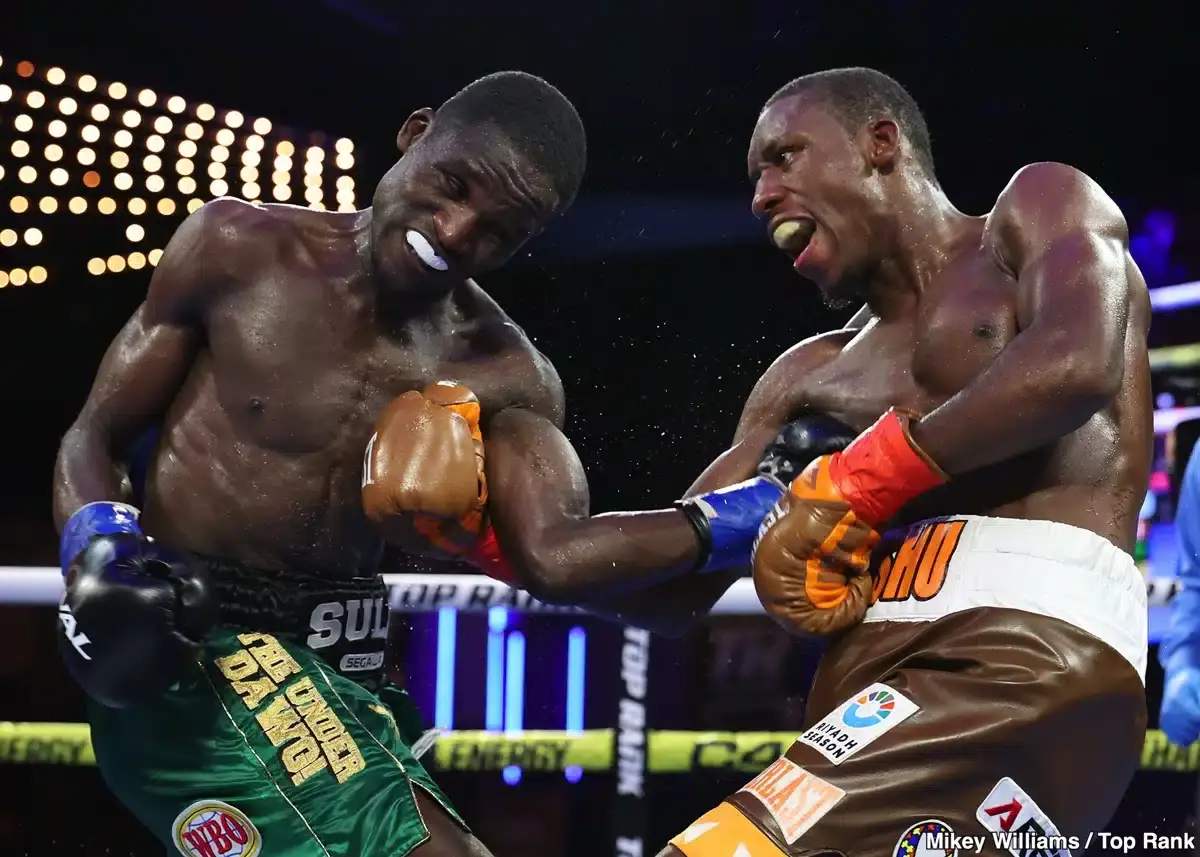BY BOXING HIT STAFF-
In a recent featherweight showdown at The Theater at Madison Square Garden, Bruce Carrington (13-0, 8 KOs) emerged with a questionable ten-round majority decision over Sulaiman Segawa (17-5-1, 6 KOs) that has ignited outrage among boxing fans and analysts alike. Despite hailing from New York, Carrington’s performance was heavily criticized, leading to a rather unexpected backlash from local fans who had initially supported him.
The bout itself was a tale of skill and strategy, with Segawa displaying remarkable technique and composure throughout the match. While Carrington carried the weight of expectation as a highly ranked fighter (#1 WBA and #2 WBC), he struggled to keep pace with Segawa’s relentless offensive onslaught. As the rounds progressed, it became evident that Segawa’s superior boxing abilities left an indelible mark on the fight. Reports indicate that Carrington may have won no more than three rounds at best, raising serious questions about the legitimacy of the judges’ scores—two of which read 97-93 in favor of Carrington.
The discrepancy between the perceived performance in the ring and the judges’ scoring has shaken the boxing community. Notably, a score of 99-91 for Segawa documented by Boxing247 speaks volumes regarding the apparent lopsidedness of the fight. Tim Bradley, ESPN’s boxing analyst, echoed these sentiments by expressing disbelief at the judges’ decisions, highlighting a general sense of injustice surrounding the outcome. Such scoring has prompted discussions about the integrity of boxing officiating, especially when “hometown decisions” typically carry the stigma of bias.
The Fight Breakdown
Segawa, a seasoned and experienced boxer at 33 years old, quickly seized control of the fight. An explosive left hand in the second round visibly shook Carrington, leading to an impressive sequence where Segawa landed an eight-punch combination that left Carrington vulnerable and on unsteady legs. The relentless pressure continued throughout the middle rounds, where Segawa demonstrated superior ring generalship and punch volume, making Carrington look increasingly passive. By the eighth round, Carrington’s hesitance to engage suggested he was well aware of the danger posed by Segawa’s power.
In light of this disappointing showing, the question becomes: What’s next for Carrington? Top Rank, his promotional entity, faces a critical decision point; they could either arrange a rematch to clear the air after such an unconvincing victory or consider slowing Carrington’s progression in the sport to reassess his training and strategy. Regardless of the path taken, Carrington’s future hangs in a delicate balance, dependent not only on his performance but also on the ongoing conversation regarding fairness in boxing matches.
Ultimately, this match serves as a reminder of the complexities of the sport, where performances in the ring can sometimes be overshadowed by the most contentious of outcomes outside it.


Leave a Reply